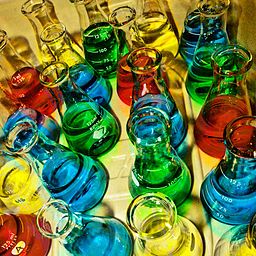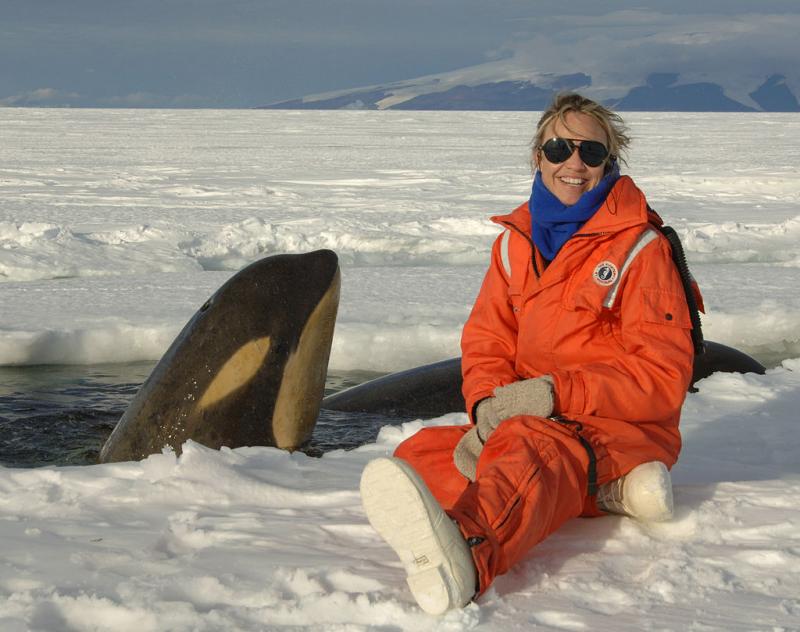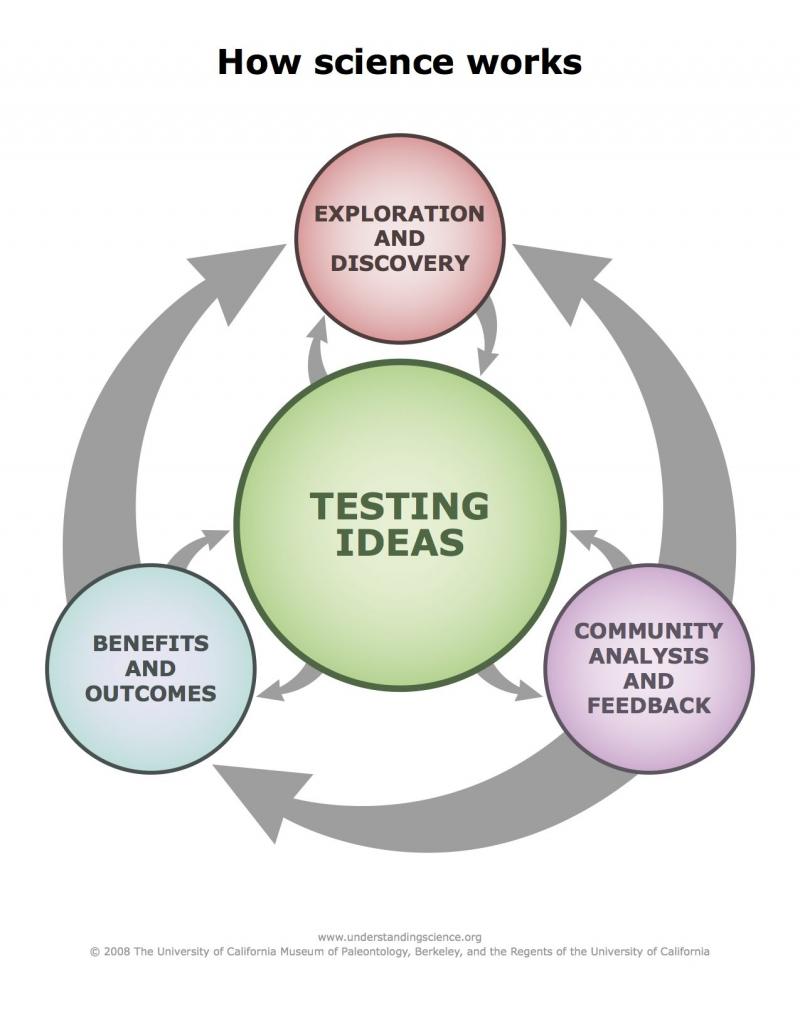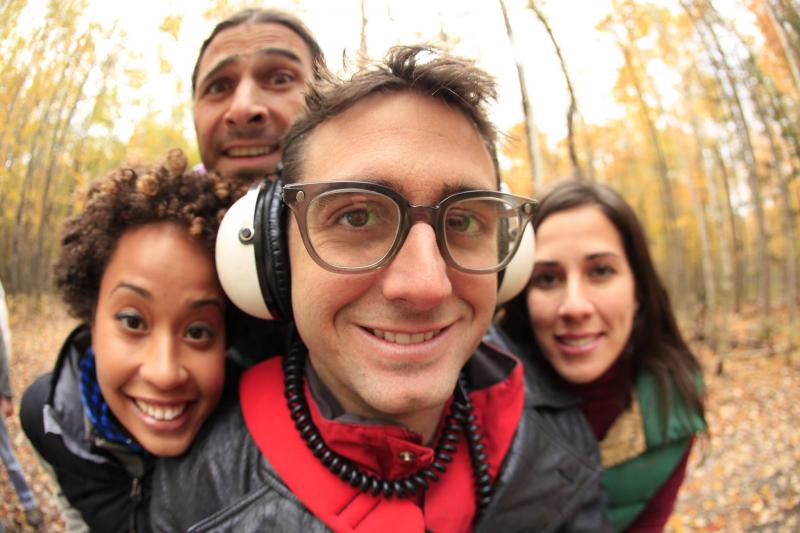I did a fair amount of photo research when
 I worked for an educational publishing company. On one occasion, I needed a nice photograph of a scientist “at work” to decorate our introductory chapter on science methods. You know what I found? Photo after photo of people in lab coats looking at or holding flasks or test tubes of colored liquids. It was almost comical, but not unexpected. I have a friend who works for a pharmaceutical company, and he once told me that when the board of directors came in for a visit, the staff members were told to fill up some containers with colored water so they’d look busy—apparently, their incredibly scientific jobs weren’t showy and sciency-looking enough! This stereotypical idea of what science looks like embodies this week’s misconception:
I worked for an educational publishing company. On one occasion, I needed a nice photograph of a scientist “at work” to decorate our introductory chapter on science methods. You know what I found? Photo after photo of people in lab coats looking at or holding flasks or test tubes of colored liquids. It was almost comical, but not unexpected. I have a friend who works for a pharmaceutical company, and he once told me that when the board of directors came in for a visit, the staff members were told to fill up some containers with colored water so they’d look busy—apparently, their incredibly scientific jobs weren’t showy and sciency-looking enough! This stereotypical idea of what science looks like embodies this week’s misconception:
All science is done via experimentation.
The reason we are so quick to link experimentation to science comes down to the very linear and very misleading “scientific method” most of us were taught in school. Usually, it comes down to something like this:
- make observations
- ask questions
- form a hypothesis
- carry out an experiment
- collect and analyze data
- draw conclusions
If that’s the way that science inexorably has to be conducted, I’ll eat my lab coat—or I would if I had one. This just isn’t how science has to work. Not only is this a fancifully idealized picture of how science is conducted, but not all science can be done with experiments. Experiments might be too dangerous, expensive, impractical, or immoral (if you think that it was controlled experiments that led researchers to conclude that certain chemicals are harmful to newborns, think again!). Experiments can also be impossible. We cannot run controlled experiments on moving tectonic plates to test the mechanics of plate tectonics, nor can we get extinct animals to run on treadmills to test their muscle strength and endurance.
When experiments are impractical or impossible, scientists can turn to observational tests of their ideas. Observational studies collect and analyze data from the natural world. These data can be drawn from the present—interactions among pollinators and certain groups of plants, for example—or they can be drawn from the past—when certain groups of plants first appear in the fossil record.

Observational studies have many benefits. Experiments tend to be reductionist and can pull the investigator away from reality. Observational studies, on the other hand, provide a direct window onto the way things really work “out there” in the real world. And, perhaps more practically, observational studies tend to be quicker and cheaper than experiments and can help scientists justify further (and perhaps costly) research.
No matter how science is “done,” it all comes down to collecting evidence that can test ideas about how the natural world works. Ideas can be tested in different ways—by experiments or by observational studies—but the point is always to see how the ideas measure up to the evidence.
The best teachers try making what they’re doing relevant to their students’ lives. Science is particularly well suited to this strategy, since science is all around us. Teachers can help their students understand the importance of observational studies as a way to test ideas by pointing out when their students are actually doing this. Going outside to document the diversity of bugs on the soccer field? Observational study! Comparing the genetic traits of your classmates? Observational study! Conducting a survey to find out if there is a connection between how many hours you sleep a night and how well you perform on tests? Observational study!

The best classroom resource I’m aware of to help to teach science methods in general is the website Understanding Science, yet another product of the University of California Museum of Paleontology in Berkeley, California (the brains behind my all-time favorite website Understanding Evolution, without which I would never be able to write these posts). Understanding Science has a plethora of resources for teachers, including lesson plans aimed at groups from grade three up through college—they even have materials to help teachers who teach teachers teach about the nature of science (got that?). But there is also a lot there for students and interested passers-by. They lay out, better than I ever could here, the way that real science works and provide many examples of exciting conclusions drawn from observational studies.
If I were a teacher, the first thing I’d do is make sure I am not presenting the old stepwise, sequential idea of science to my students, and instead, use Understanding Science to pull examples of real, messy, awesome science methods to get my kids excited for the year. I’d also introduce my students to Untamed Science—a cohort of  scientists that make educational videos. Their short films, from What is a Biologist? to The Chemistry of Love, will help correct any misconceptions about what scientists look like and do all day. Heck! one of the Untamed Science guys stars in the new National Geographic show Survive the Tribe—these scientists are cool. (N.b.: Please prescreen the videos for audience-appropriateness—I’d say most are fine for high school, though there are some that’d work for middle school, too.)
scientists that make educational videos. Their short films, from What is a Biologist? to The Chemistry of Love, will help correct any misconceptions about what scientists look like and do all day. Heck! one of the Untamed Science guys stars in the new National Geographic show Survive the Tribe—these scientists are cool. (N.b.: Please prescreen the videos for audience-appropriateness—I’d say most are fine for high school, though there are some that’d work for middle school, too.)
The bottom line is this: There is no fixed path in science. Scientists are united in their goal of collecting data that tests the their ideas about the natural world—but that data can come from experiments or observational studies. Both involve rigorous analysis of collected evidence; both methods involve controlling variables (where possible), avoiding bias, and replicating results. But you know what neither method involves, or at least very rarely involves? Containers of colored water—not that those can’t be useful come egg-dying season.

